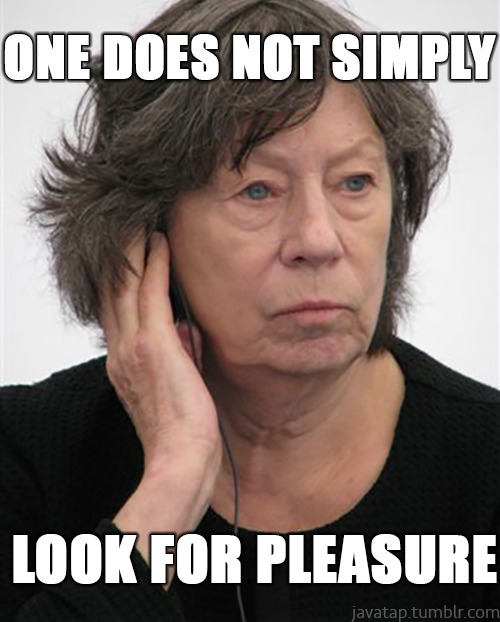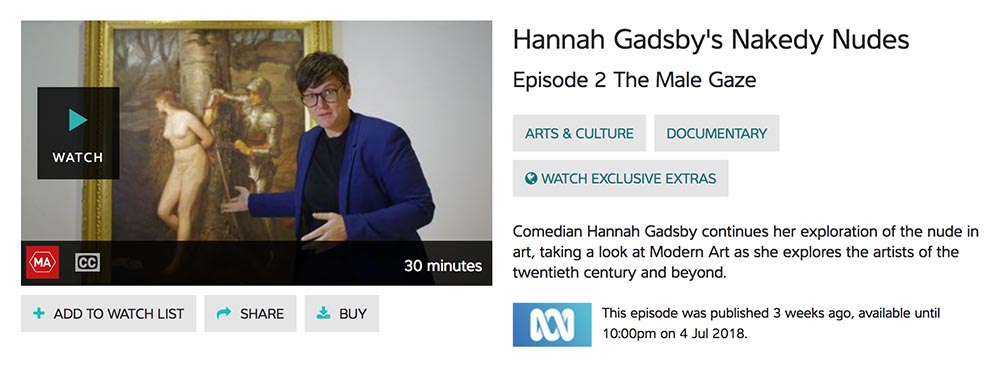 This material will assist you to grasp on the concept of the so-called Male and Female Gaze (aka Queer Gaze). We will approach these concepts though the work of Laura Mulvey (Male Gaze 1975) and Jill Solway (Female Gaze 2015).
This material will assist you to grasp on the concept of the so-called Male and Female Gaze (aka Queer Gaze). We will approach these concepts though the work of Laura Mulvey (Male Gaze 1975) and Jill Solway (Female Gaze 2015).
A key idea of feminist film theory, the concept of the male gaze was introduced by scholar and filmmaker Laura Mulvey in her now famous 1975 essay, Visual Pleasure and Narrative Cinema. Adopting the language of psychoanalysis, Mulvey argued that traditional Hollywood films respond to a deep-seated drive known as “scopophilia”: the sexual pleasure involved in looking. Mulvey argued that most popular movies are filmed in ways that satisfy masculine scopophilia.
Although sometimes described as the “male gaze”, Mulvey’s concept is more accurately described as a heterosexual, masculine gaze.”
(Loreck, J 2016, ‘Explainer: what does the ‘male gaze’ mean, and what about a female gaze?’, The Conversation, )
 Jill Soloway (born September 26, 1965) is an American comedian, playwright, writer and director. Soloway, who identifies as non-binary and prefers singular they pronouns, won the Best Director award at the Sundance Film Festival for directing and writing the film Afternoon Delight. They are also known for their work on Six Feet Under and for creating, writing, executive producing and directing the Amazon original series Transparent, for which they won two Emmys. (https://en.wikipedia.org/wiki/Jill_Soloway )
Jill Soloway (born September 26, 1965) is an American comedian, playwright, writer and director. Soloway, who identifies as non-binary and prefers singular they pronouns, won the Best Director award at the Sundance Film Festival for directing and writing the film Afternoon Delight. They are also known for their work on Six Feet Under and for creating, writing, executive producing and directing the Amazon original series Transparent, for which they won two Emmys. (https://en.wikipedia.org/wiki/Jill_Soloway )
WATCH: Jill Soloway on The Female Gaze | MASTER CLASS | TIFF 2016, TIFF Uncut, youtube, 57:48 minutes
WHAT IS THE FEMALE GAZE?
“Numero uno, I think the Female Gaze is a way of “feeling seeing”. It could be thought of as a subjective camera that attempts to get inside the protagonist, especially when the protagonist is not a Chismale. It uses the frame to share and evoke a feeling of being in feeling, rather than seeing – the characters. I take the camera and I say, hey, audience, I’m not just showing you this thing, I want you to really feel with me. I have my particular methods, our cinematographer, Jim Frohna, when he is holding the camera, his body is IN FEELING, not capturing but playing an action, like melting or oozing or allowing, he plays a feeling action… Maybe you notice when you see this kind of filmmaking you FEEL MORE. You get the FEELS when you watch, as the young people say. […] As a director I help make this happen by staying in my body as the actors work, by prioritizing all of the bodies on the set over the equipment or the money or the time. […] Part One. Reclaiming the body, using it with intention to communicate Feeling Seeing.
Part Two. I also think the Female Gaze is also using the camera to take on the very nuanced, occasionally impossible task of showing us how it feels to be THE OBJECT of the Gaze. The camera talks out at you from its position as the receiver of the gaze. This piece of the triangle reps the Gazed gaze. This is how it feels to be seen… The gazed gaze.
This third thing involves the way THE FEMALE GAZE DARES to return the gaze. It’s not the gazed gaze. It’s the gaze on the gazers. It’s about how it feels to stand here in the world HAVING BEEN SEEN our entire lives… Or, in a line I heard in a web series today, we don’t write culture, we’re written by it. It says WE SEE YOU, SEEING US. It says, I don’t want to be the OBJECT any longer, I would like to be the SUBJECT, and with that SUBJECTIVITY I can name you as the OBJECT.
This would be the third leg of the triangle and I think it’s the most important, and the one that really truly has been almost entirely NOT YET DONE. It’s less about a filmic language – although it could easily employ either of the techniques I just mentioned – but rather, this part of the female gaze is a SOCIOPOLITCAL justice-demanding way of art making.”
(https://www.toppleproductions.com/the-female-gaze)
WATCH: Examples of The Male Gaze
READ: Mulvey, L 1975, ‘Visual Pleasure and Narrative Cinema’
Laura Mulvey is a British feminist film theorist. She was educated at St Hilda’s College, Oxford. She is currently professor of film and media studies at Birkbeck, University of London. She worked at the British Film Institute for many years before taking up her current position. (https://en.wikipedia.org/wiki/Laura_Mulvey)
http://www.bbk.ac.uk/culture/staff/teaching-staff/laura-mulvey
WHAT IS THE MALE GAZE?
A key idea of feminist film theory, the concept of the male gaze was introduced by scholar and filmmaker Laura Mulvey in her now famous 1975 essay, Visual Pleasure and Narrative Cinema. Adopting the language of psychoanalysis, Mulvey argued that traditional Hollywood films respond to a deep-seated drive known as “scopophilia”: the sexual pleasure involved in looking. Mulvey argued that most popular movies are filmed in ways that satisfy masculine scopophilia. Although sometimes described as the “male gaze”, Mulvey’s concept is more accurately described as a heterosexual, masculine gaze.”
– (Loreck, J 2016, ‘Explainer: what does the ‘male gaze’ mean, and what about a female gaze?’, The Conversation, https://theconversation.com/explainer-what-does-the-male-gaze-mean-and-what-about-a-female-gaze-52486)

Barbara Kruger, Untitled (Your gaze hits the side of my face), 1981
Photograph and type on paperboard, 47.9 × 39.1 × 4.4 cm
“The inclusion of personal pronouns in works like Untitled (Your Gaze Hits the Side of My Face) (1981) and Untitled (I Shop Therefore I Am) (1987) implicates viewers by confounding any clear notion of who is speaking.” https://www.guggenheim.org/artwork/artist/barbara-kruger
MORE NOTES AND IMAGES HERE
FURTHER READING
-
Hannah Gadsby’s Nakedy Nudes Episode 2 The Male Gaze, ABC TV, http://iview.abc.net.au/programs/hannah-gadsbys-nakedy-nudes/AC1603H002S00
-
Carroll Harris, L (2018). ‘Hannah Gadsby on the male gaze in art: ‘Stop watching women having baths. Go away.’ The Guardian,19 Feb, https://www.theguardian.com/profile/lauren-carroll-harris
-
Bell Hooks + Jill Soloway – Ending Domination: The Personal is Political I The New School (2016). The New School, youtube, 1:32:37
At 15:40 Soloway wonders if the Female Gaze is better termed The Queer Gaze.
-
Miler, L 2018, ‘The Relentless Torture of The Handmaid’s tale’, The Cut, https://www.thecut.com/2018/05/the-handmaids-tale-season-2-review.html
“It’s a sexist story as old as the Bible: The bravery of the heroine is intensified by her victimhood: misogynist culture raises up women who suffer. That June is pregnant, and an anguished mother, only enhances her heroism in the eyes of the show. The writers of season 2 know as well as the founders of Gilead that no trope is more sacred than motherhood. In an infuriating and grotesque reversal, Atwood’s feminist allegory has turned instead into a showcase of female abuse: returning to the scene, I noted how the camera lingered on June’s dripping blood. And I decided, I am done.”
-
In Conversation With Laura Mulvey (Interview) 2017, Another Gaze Journal, youtube, 8:10 minutes
-
Visual Pleasure at 40: Laura Mulvey in discussion (Extract) | BFI (2015)
-
Mulvey, L. (2015). The pleasure principle. Sight & Sound, Xxv(6), 50-51.
On the 40th anniversary of her influential article ‘Visual pleasure and narrative cinema’, Laura Mulvey looks back at its influence and considers its contemporary relevance for feminist viewers.

